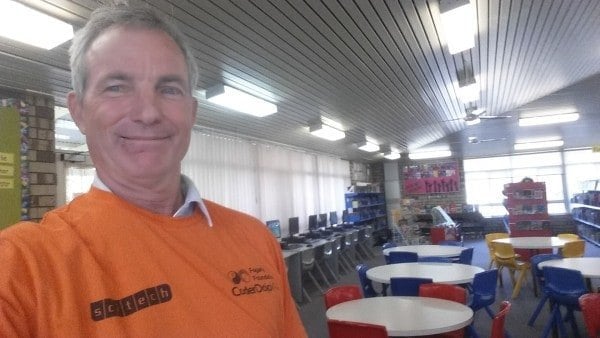Humans of CoderDojo WA – Robert Cheung
Robert Cheung, Mentor at UWA Dojo.
We speak to Robert about some of his favourite memories as a Mentor and why mentoring is a great way to “pay it forwards”.
What brought you to CoderDojo?
My employer, IBM, was contacted by the Fogarty Foundation for volunteers for CoderDojo. In particular, the Foundation were hoping for people with IT industry experience. Several of us at work decided to volunteer. For me personally, I enjoy teaching and coaching people. Furthermore, I had the fortune of experiencing computer programming from a young age through various education initiatives at the time, this was a good opportunity to “pay it forwards”.
What has been one of your favourite memories as a mentor?
My favourite memory as a Mentor at CoderDojo is around one particular Ninja. He was very good at going through the online exercise, but had difficulty understanding some of the more advanced ideas. After about 3 semesters, he finally and suddenly “got it”. It was extra gratifying because it was an exercise that I personally devised that provided the final springboard to get him over the line. Given that these concepts are generally taught at year 11/12 level, and this Ninja had only just started high school, it clearly shows that Ninjas are accumulating knowledge and skills through the weekly sessions.
What advice would you give to anyone thinking about mentoring at a Dojo?
The environment is very casual and non-exacting, which might be a very good change of pace for IT professionals. However, don’t mistake that for lack of “achievement”. The amount that the Ninjas learn are non-trivial, and the fact that they happily come back week after week shows they also enjoy it. If you focus on “how can you add value to this session”, you will find that is often all that is needed for things to flow smoothly.
Terry Keesing, Champion at Rostrata Primary School
This month, Rostrata Primary School opened its doors to 95 Ninjas!! Because of the huge demand, they had to split their Dojo into three separate sessions! I caught up with Champion Terry Keesing to ask some questions about his Dojo experience:
What has been the best part of setting up your Dojo?
The best part of setting up a Dojo is seeing the excitement generated by the children while working on their projects. The ninjas are very focused and love the interaction amongst themselves and the free choice they have to work on whatever they want. Is also great to see the girls getting involved in large numbers, and being involved in projects such as robotics. The parent mentors have been helpful and the Dojo has a nice warm community feel about it.
What has been the most unexpected part of the Dojo experience so far?
The most unexpected part was the large number of children wanting to be involved. We didn’t want to turn anyone away, so with 95 Ninjas enrolled, the number of Dojos increased to three. The Dojos run before school from 7.30 to 8.30 three mornings a week.
Any advice for new Champions?
My advice to Champions is: don’t worry about starting a Dojo! I have no coding experience myself, I am just a facilitator of opportunities. I think a little bit of structure is good, but have plenty of opportunities to explore available. For example, I have a web page with hyperlinks to different coding sites. This gives Ninjas an idea of what’s available to them. Mbot robots are fantastic for construction and purposeful coding, and Raspberry Pi and Raspbian are a cheap and great way to encourage coding projects. You don’t have to know about these things though! The Ninjas work together to solve their own problems, and that is the real value of running a Coder Dojo.
